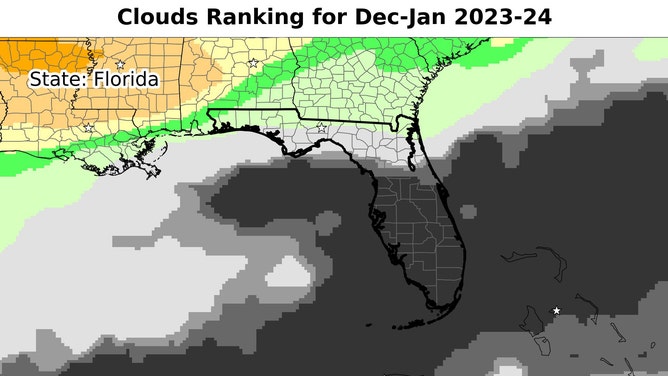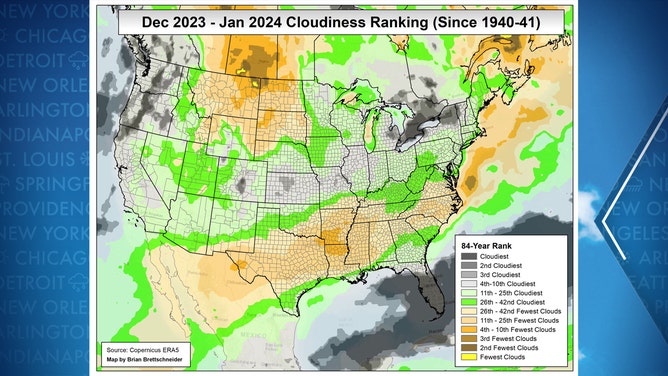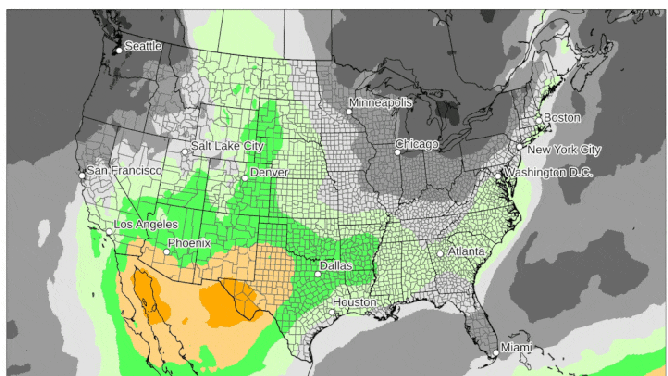Florida becomes the 'Unshine' State after enduring cloudiest winter period in 84 years
The entire Florida Peninsula just gloomed its way through its cloudiest December-January period, according to research by Alaska Climatologist Brian Brettschneider.
Florida has gloomiest December-January period on record
Those who hoped to escape winter in Florida may have dodged freezing temperatures may have dodged the frost but not the clouds. Weather data analysis shows Florida had its cloudiest December-January stretching back to at least 1941.
MIAMI – Florida's snowbirds are going to want a refund.
Thousands of Northerners looking south to find sun and escape the winter chill only succeeded with half their goal this winter.
The entire Florida Peninsula just gloomed its way through its cloudiest December-January period in the past 84 years that such data has been available, according to research by Alaska Climatologist Brian Brettschneider.
For example, Miami's average cloud cover during that period was 70%, compared to just 47% in that same period last year. Orlando (66% vs. 47%) and Tampa (68% vs. 48%) are in the same boat.

Cloud ranking for December-January using ERA5 data reanalysis from ECMWF.
(Brian Brettschneider / @Climatologist49 / FOX Weather)
While Florida is likely the most shocking to be in record gloom territory, they were not alone.
After a very active lake-effect snow season, Buffalo had its cloudiest December-January, too. The city had 51 of the 62 days considered cloudy to overcast, including all 31 days in January. Areas in New York off Lake Ontario also ranked among their gloomiest.

Colors show rank from 1-84 in nation's cloud cover from December 2023 through January 2024.
(Brian Brettschneider / @Climatologist49 / FOX Weather)
The Pacific Northwest is no sunshine haven in December or January in a regular winter, but this winter still managed to come in cloudier than average. Yakima, Washington, ranked as their gloomiest, while Spokane ranked in their top 5.
Who hit the sunshine jackpot?
If you needed a winter sunshine fix, the place to be was in Roosevelt County, Montana, tucked in the far northeastern corner of the state near the Canadian border. Analysis showed they had their sunniest December-January in the past 84 years.
HERE'S HOW TO SPOT THE SUN'S ELUSIVE GREEN FLASH

(FOX Weather)
Nearby Glasgow wasn't quite in that zone. The city only had 34% cloud cover in the period, helped by a blazing December, which only had 21% cloud cover.
On the other hand, they had a stretch of low temperatures in mid-January, dropping below -30. In that sense, maybe a cloudy Florida still wins.
The data is compiled by the European Center for Medium-Range Weather Forecasting (ECMWF)'s "ERA5" program, which uses numerous atmospheric, land, and oceanic climate variables to recompute weather data back to 1940. If that acronym looks familiar from your social media feeds, they're the same scientists behind the "European" or "Euro" weather forecast model.
